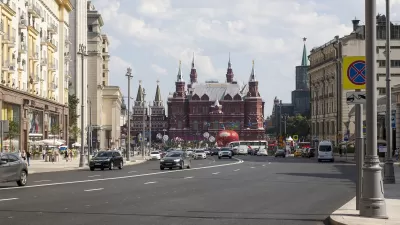The vote to approve restrictions on immigration passed narrowly with 50.3 percent of the vote. The main repercussion may be how it impacts trading with its neighbors in the EU as immigration quotas may invalidate a 1999 treaty allowing free movement.
"A narrow majority of voters in Switzerland approved proposals on Sunday (Feb. 9) that would reintroduce restrictions on the number of foreigners who are allowed to live and work in the country, a move that could have far-reaching implications for Switzerland’s relations with the European Union," writes Melissa Eddy.
In Brussels, the European Commission issued a statement saying that it was “disappointed” that the initiative had passed, adding that it would have to study the vote’s implications on relations between the European Union and Switzerland.
Neil MacLucas in the Wall Street Journal writes, "In advance of the vote, the EU warned it wouldn't renegotiate the 1999 treaty if Swiss voters approved the immigration measure, saying Switzerland couldn't pick and choose the elements of the agreement it wanted to keep."
"Switzerland, which is not part of the European Union, has one of the highest proportions of foreigners in Europe, accounting for about 27 percent of the country’s population of about eight million. Many job seekers have arrived from countries hit hard by the European economic crisis," writes Eddy, adding that "the number of foreign-born residents has risen by 14 percent over the past five years, a pace that some Swiss see as too rapid."
By comparison, 27 percent of California's have been foreign-born since 2000, as we noted in November 2011 and more recently by the Public Policy Institute of California. The state passed an anti-immigrant measure in 1994 that was voided by the courts because it violated the U.S. Constitution.
The "Stop Mass Immigration" measure was promoted by the rightist Swiss People’s Party which had collected 100,000 signatures to put it on the ballot. They said that "the curbs are needed because a rise in the number of immigrants has created too much competition for jobs, raised property prices and rents, and overtaxed the local transportation system", writes MacLucas.
In addition to potentially impacting trading with the 28 member countries that compose the EU, there is a fear that these restrictionary policies could spread throughout Europe.
Far-right parties with anti-immigrant platforms in France, the Netherlands and Norway have gained strength in recent years, and there have been sharp debates in Britain and Germany over limiting the number of immigrants from Bulgaria and Romania because citizens from those countries gained full access to European Union job markets this year.
Repeating a theme present in the U.S., the more urban regions of the country reflected a more liberal vote than other areas. "The largest cities, Zurich and Basel, rejected the vote, and smaller cities and rural areas supported it," writes Eddy.
FULL STORY: Swiss Voters Narrowly Approve Curbs on Immigration

Alabama: Trump Terminates Settlements for Black Communities Harmed By Raw Sewage
Trump deemed the landmark civil rights agreement “illegal DEI and environmental justice policy.”

Study: Maui’s Plan to Convert Vacation Rentals to Long-Term Housing Could Cause Nearly $1 Billion Economic Loss
The plan would reduce visitor accommodation by 25% resulting in 1,900 jobs lost.

Planetizen Federal Action Tracker
A weekly monitor of how Trump’s orders and actions are impacting planners and planning in America.

This Toronto Suburb Has More Bus Riders Than Columbus, Ohio
Brampton, Ontario used gradual improvements in service to prove that if you build it, they will ride.

Paris Bike Boom Leads to Steep Drop in Air Pollution
The French city’s air quality has improved dramatically in the past 20 years, coinciding with a growth in cycling.

Why Housing Costs More to Build in California Than in Texas
Hard costs like labor and materials combined with ‘soft’ costs such as permitting make building in the San Francisco Bay Area almost three times as costly as in Texas cities.
Urban Design for Planners 1: Software Tools
This six-course series explores essential urban design concepts using open source software and equips planners with the tools they need to participate fully in the urban design process.
Planning for Universal Design
Learn the tools for implementing Universal Design in planning regulations.
Smith Gee Studio
Alamo Area Metropolitan Planning Organization
City of Santa Clarita
Institute for Housing and Urban Development Studies (IHS)
City of Grandview
Harvard GSD Executive Education
Toledo-Lucas County Plan Commissions
Salt Lake City
NYU Wagner Graduate School of Public Service





























